It’s Never too Late to Start Smoking … Meats that is
Smoking meats, what an interesting process to learn! Since I hunt and usually freeze or can my venison, I wanted to try something new. My research showed many different opinions on the smoking process, both personal preferences and safety. Historically, it’s an interesting subject. Well before the invention of refrigeration, people preserved their meats with salt, drying and smoke. The smoking process dries the meat and emits acids which cling to the meat, forming an outside layer. This acid preserves the meat by slowing down the growth of bacteria and preventing mold from forming. Smoking also improves the flavor and color of meat, making it more appealing.
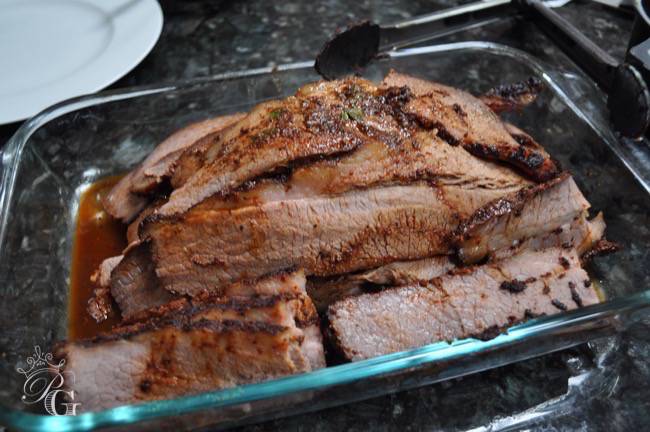
There are two different methods for smoking meat. Cold Smoking (sometimes called Hard Smoking) does not cook the food. It is required when the meat is being smoked for preservation without refrigeration, something early hunters did to extend the length of time meat could be eaten after the hunt. It is dried rather than cooked and includes curing the meat. This process is similar to dehydration but uses salt, spices and smoke.
Through my research, I discovered cold smoking is truly done in temperatures at or below 100°F, from several days to several weeks. Since these temperatures are in the rapid microbial growth range of 40°F- 140°F, cold smoking is NOT recommended as a home process. The National Center for Home Food Preservation says, “Most food scientists cannot recommend cold-smoking methods because of the inherent risks.” Perhaps our ancestors had stronger stomachs or maybe that’s why they died younger. Leave the cold smoking up to the professionals.
If industrially cured, smoked and stored properly, this meat will keep indefinitely, although it should be eaten within a year. The other method, Hot Smoking, cooks the meat gently and slowly. This method is usually done at temperatures 150°- 225°F and used for tastier flavor and richer color. It will need to be eaten, refrigerated and stored in the same timely manner as any cooked meat.
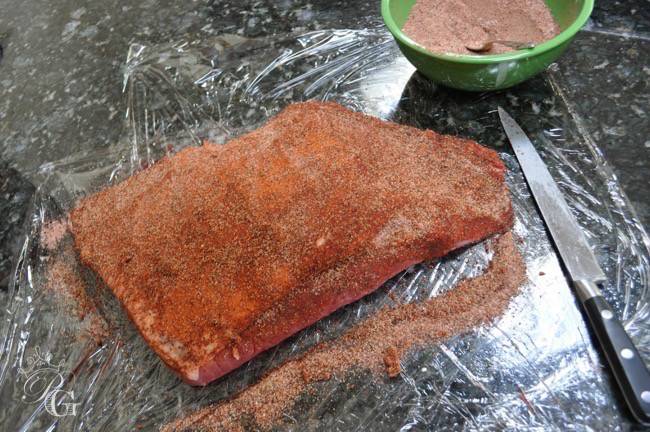
Curing meat is an important step in the smoking process. It is done with either a Dry Cure or a Brine (wet) Cure. When preparing meats with a dry cure, the salt, sugar and spices are sprinkled directly on the meat and refrigerator for a minimum amount of time. A brine cure has the salt, sugar and spices mixed into water. Whether using a wet or dry cure, it’s important to use a container made of glass, plastic or enamel, never metal.
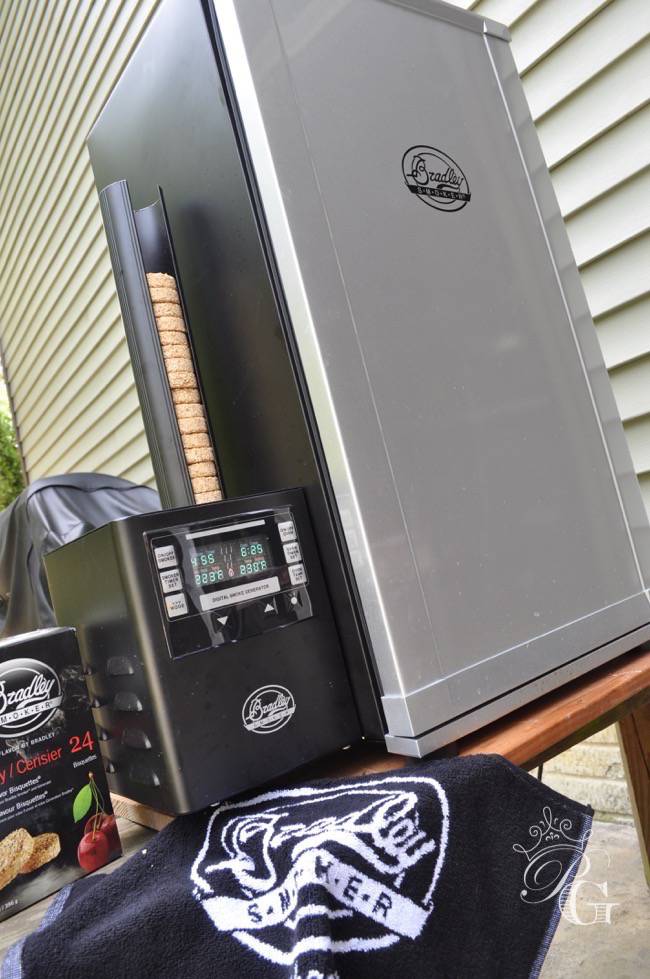
Just as there are many different processes and recipes for smoking meats, there are numerous smokers on the market. Some are electric or gas, while others use charcoal or wood. They may use wood chips, bisquettes, chunks, powder, pellets, and so on, depending on the smoker you purchase. I chose the Bradley Digital Smoker. It’s electric, has 12 flavors of wood bisquettes and is super easy to use. Remember, I’m trying to experience new things. Why work harder when I can work smarter?
Smoking to Make Jerky
Using the leanest cuts of meat, remove all visible fat. Slice the meat evenly, no more than a quarter inch thick. Slice across the grain for tender bites, with the grain for tough, chewier bites.
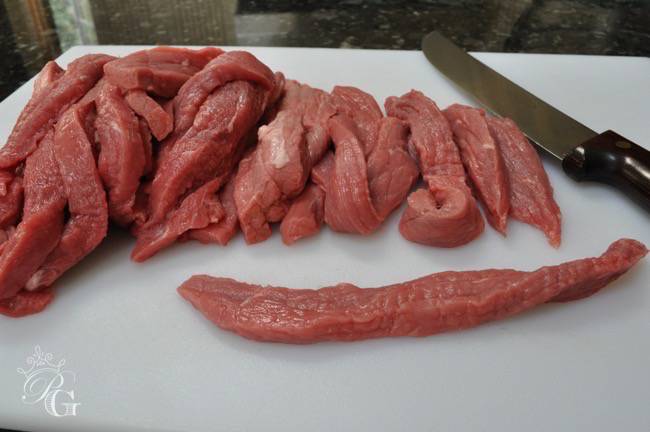
Purchasing a ready made cure was the way I prepared my meat. There are many different brands out there with numerous flavors available. The sodium nitrate it contains is primarily used to prevent botulism, but also add flavor and an extended shelf life. I used the dry method to cure the meat, and stored it for 24 hours in the refrigerator, per the manufacturers suggest. This amount may vary depending on the cure you use, the amount of salt it contains and the thickness of the meat.

With the curing process compete, I set my electric Bradley Smoker for 150°F and enough smoking bisquettes for 2 hours of smoke. There is a fine balance for the amount of smoke you want in the meat. For the most part it’s trial and error, a matter of taste. Since drying is the process that makes jerky, I didn’t add water to the drip bowl. Once the 2 hours were done, I increased the temperature to 180°F and continued cooking (about 4 more hours) until I liked the consistency of the dryness. This part could also have been done in my oven, since the smoking was complete. Again, there are many different recipes with various temperatures and times. It’s just a matter of finding the process that you like best.
Smoking Fish
Smoking fish has long been used as a way of temporary preservation. Again, as with meat, the only safe way is to use the hot smoked method with a brine.
Although fish preparation varies by species, there are principles that apply to all types. Always use quality fish. Smell it, touch it and look at it. Thaw frozen fish in the refrigerator or fresh water. Keep cool until ready to smoke. And be sure to cut fish in uniform pieces for equal salting.
Salting fish should be done in a non- metallic bowl with a brine that is 1 part table salt to 7 parts water for at least 1hour in refrigeration. Once competed, rinse the fish surface and air dry in a cool place. Now the smoking. Once your smoker reaches 100°F, add your oiled racks of fish and set temperature to 225°F. Once the thickest part of the fish reaches 150° it should be held for 30 minutes. I only smoked my fish for the first 3 hours.
Smoked fish can be stored in the refrigerator for almost a month. Properly wrapped, it will last in the freezer for 1 year.

Smoking Flavor
There are many different woods that can be used for smoking. It is suggested that chicken and fish are better with apple, pecan, cherry and alder wood. While pork and beef are complimented with hickory, mesquite or oak. With all the choices in wood, meat and spices, there is an infinite number of flavors that can be created when smoking meats. However, there are a few things to keep in mind during the process. Since you want the meat to stay moist, be sure to maintain water in your drip pan. This will add moister to your smoker throughout the process. Wrap meat aluminum foil and let it rest for 15-20 minutes after smoking to allow the juices to re-distribute before carving.
Brine chicken, turkey and other lean meats overnight in the refrigerator, before smoking to retain moisture. Other cuts of meat, beef, ribs, and chops can be rubbed with spices or mopped. When smoking for flavor, the temperature of the smoker should be between 200-300 °F and always make sure your meat is cooked to the proper internal temperature for safety.
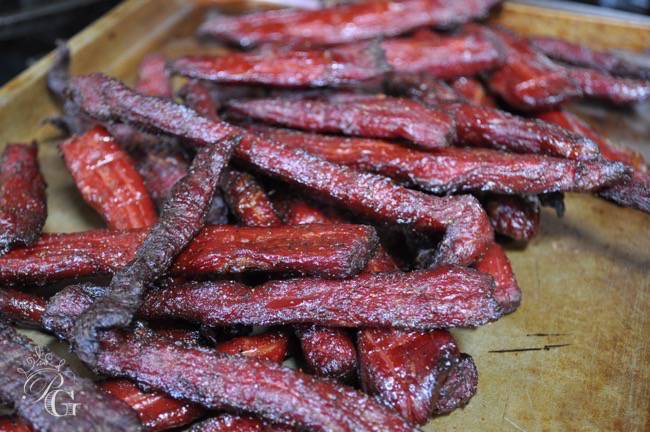
Smoking meats is an enjoyable process with fantastics smells and delicious results. Do your research, decide what smoking process will work best for you and find some recipes. Get going and start smoking!


